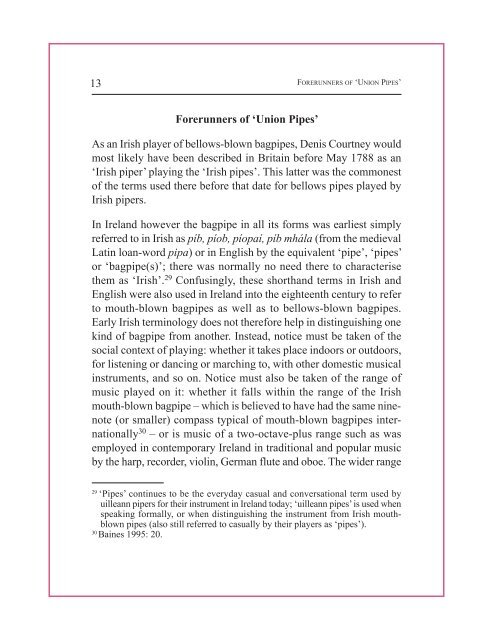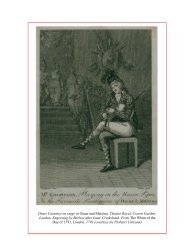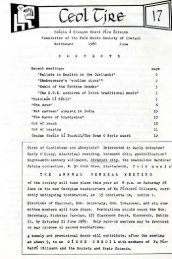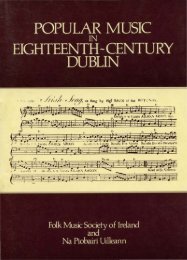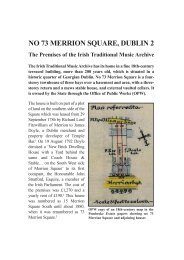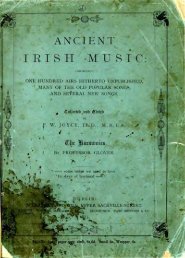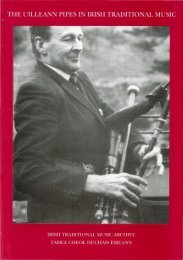Union Pipes - Irish Traditional Music Archive
Union Pipes - Irish Traditional Music Archive
Union Pipes - Irish Traditional Music Archive
Create successful ePaper yourself
Turn your PDF publications into a flip-book with our unique Google optimized e-Paper software.
13<br />
FOrerUnnerS OF ‘UnIOn PIPeS’<br />
Forerunners of ‘<strong>Union</strong> <strong>Pipes</strong>’<br />
As an <strong>Irish</strong> player of bellows-blown bagpipes, Denis Courtney would<br />
most likely have been described in Britain before May 1788 as an<br />
‘<strong>Irish</strong> piper’ playing the ‘<strong>Irish</strong> pipes’. This latter was the commonest<br />
of the terms used there before that date for bellows pipes played by<br />
<strong>Irish</strong> pipers.<br />
In Ireland however the bagpipe in all its forms was earliest simply<br />
referred to in <strong>Irish</strong> as píb, píob, píopaí, píb mhála (from the medieval<br />
latin loan-word pipa) or in english by the equivalent ‘pipe’, ‘pipes’<br />
or ‘bagpipe(s)’; there was normally no need there to characterise<br />
them as ‘<strong>Irish</strong>’. 29 Confusingly, these shorthand terms in <strong>Irish</strong> and<br />
english were also used in Ireland into the eighteenth century to refer<br />
to mouth-blown bagpipes as well as to bellows-blown bagpipes.<br />
early <strong>Irish</strong> terminology does not therefore help in distinguishing one<br />
kind of bagpipe from another. Instead, notice must be taken of the<br />
social context of playing: whether it takes place indoors or outdoors,<br />
for listening or dancing or marching to, with other domestic musical<br />
instruments, and so on. notice must also be taken of the range of<br />
music played on it: whether it falls within the range of the <strong>Irish</strong><br />
mouth-blown bagpipe – which is believed to have had the same ninenote<br />
(or smaller) compass typical of mouth-blown bagpipes internationally<br />
30 – or is music of a two-octave-plus range such as was<br />
employed in contemporary Ireland in traditional and popular music<br />
by the harp, recorder, violin, german flute and oboe. The wider range<br />
29<br />
‘<strong>Pipes</strong>’ continues to be the everyday casual and conversational term used by<br />
uilleann pipers for their instrument in Ireland today; ‘uilleann pipes’ is used when<br />
speaking formally, or when distinguishing the instrument from <strong>Irish</strong> mouthblown<br />
pipes (also still referred to casually by their players as ‘pipes’).<br />
30<br />
Baines 1995: 20.


